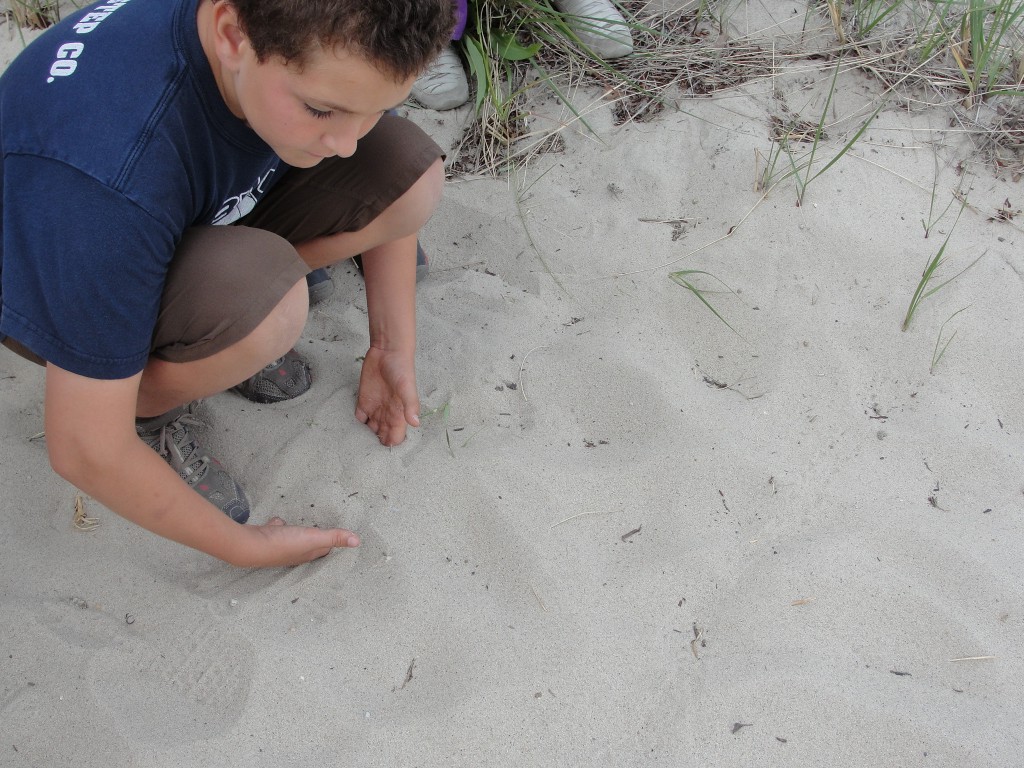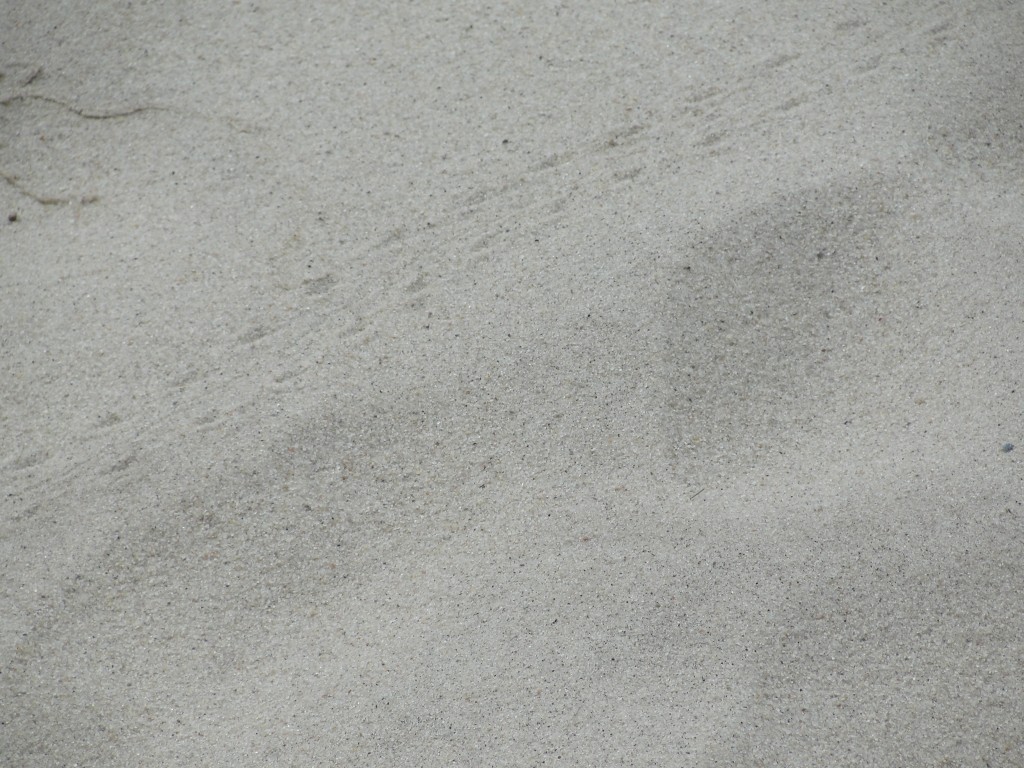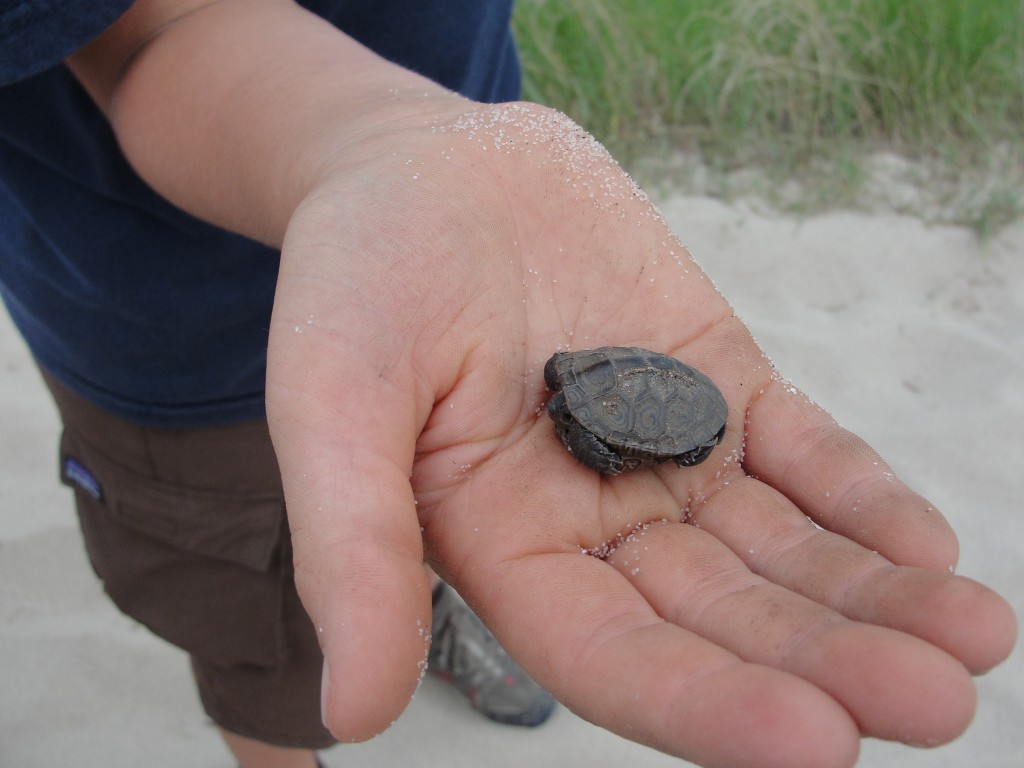If you’ve been out and about at all over the last few weeks you probably are well aware that turtles are on the move. Whether turtles live in the sea, the marsh, the pond or the woods, they all seek warm sand on land to lay their eggs.
Although sea turtles come here to feed they do not lay eggs on the Cape but we have plenty of other egg laying turtles. Only one of them lives in the marsh and that is the diamondback terrapin. These turtles are almost never seen on land, spending most of their time in bays, inlets in marshes and other such places. You are far more likely to see them when out kayaking in a marsh than walking along a trail at the beach.
I was out with a group of Sandy Neck Junior Rangers this past week and we went looking for turtle tracks. They are hard to see, both in the photo and in real life but once you know what to look for, they are easy to recognize. Note the little bit of drag in the middle….that is from the shell.
We then spotted the tiny turtle…
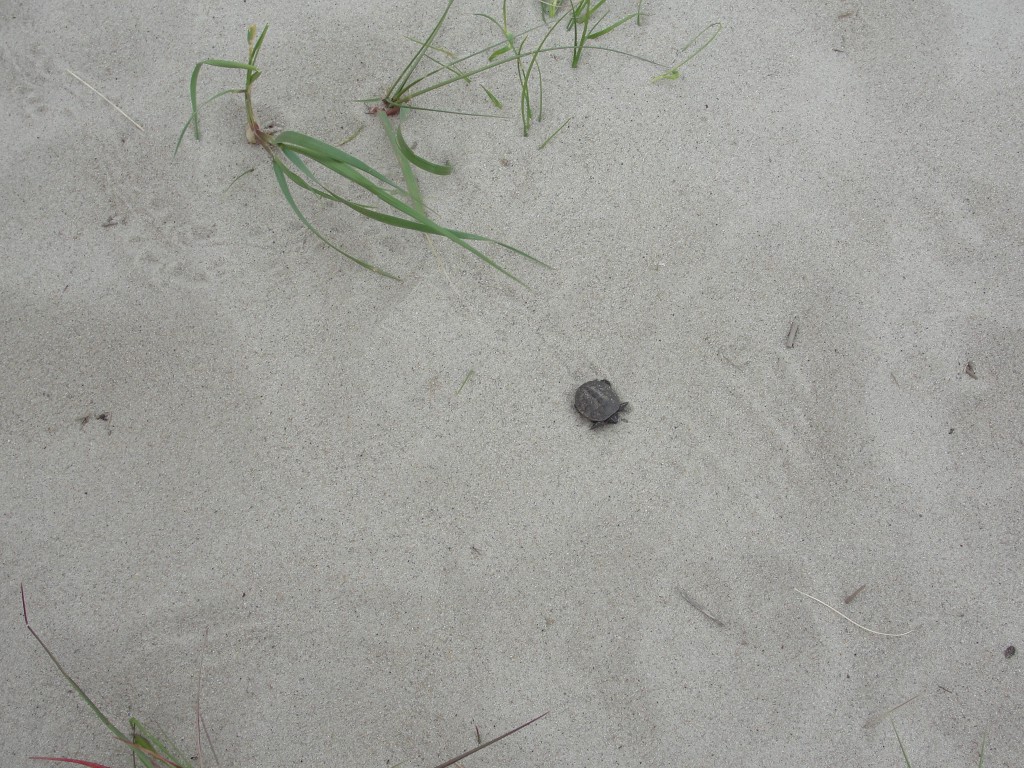 This was a baby diamondback terrapin that was recently hatched but from eggs laid last year, not this year.
This was a baby diamondback terrapin that was recently hatched but from eggs laid last year, not this year.
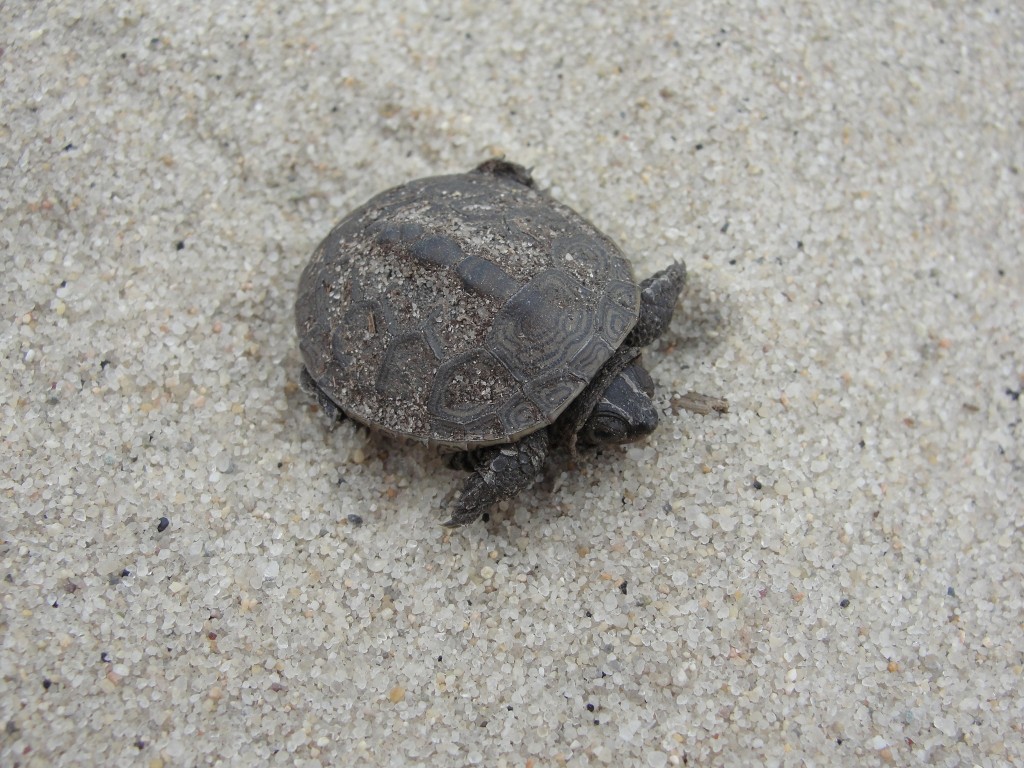 We eventually found the tracks of other baby diamondback terrapins as well as another en route to the marsh. If you find baby turtles on the move at this time of year, please let them keep on walking. Don’t pick them up and “help” them by taking them to the water. Walking strengthens little legs so they will be able to swim when they get there. Also, baby box turtles should never be taken to water for they are land turtles and can’t swim! You should also be aware that it is illegal in the state of Massachusetts to take baby turtles or any wild turtles home to keep as pets.
We eventually found the tracks of other baby diamondback terrapins as well as another en route to the marsh. If you find baby turtles on the move at this time of year, please let them keep on walking. Don’t pick them up and “help” them by taking them to the water. Walking strengthens little legs so they will be able to swim when they get there. Also, baby box turtles should never be taken to water for they are land turtles and can’t swim! You should also be aware that it is illegal in the state of Massachusetts to take baby turtles or any wild turtles home to keep as pets.
This last photo gives you a good idea of how tiny that little turtle was–it is in a child’s hand! We respectfully put this little one back where it had been but not before all the kids got to peek at it up close. So keep your eyes open, it’s a turtle time of year out there!

